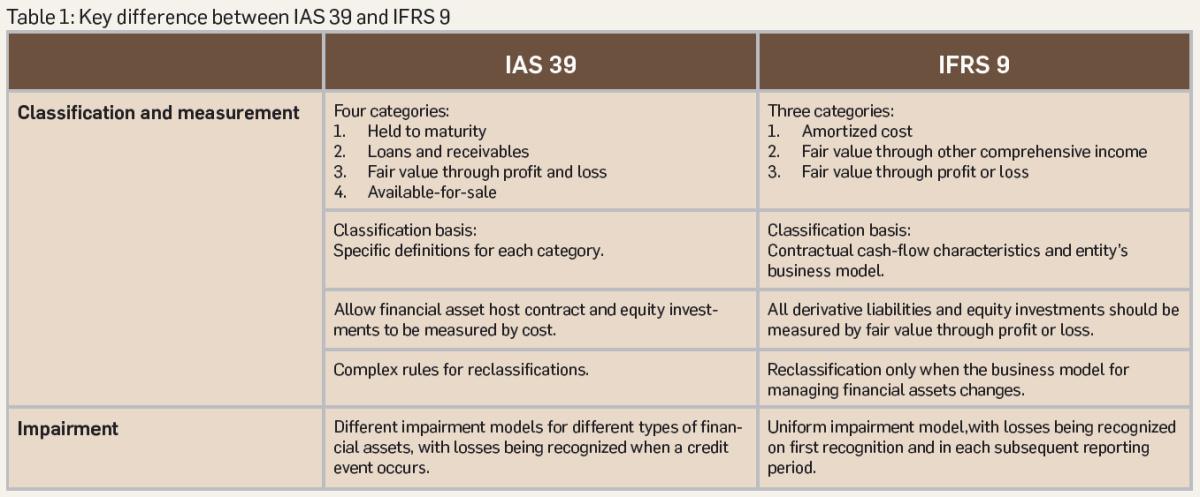Kenneth Yeo and Daniel Martin explore the requirements and application of the standard replacing IAS 39
The global over-the-counter (OTC) derivatives market has grown significantly over the last two decades. According to the Bank for International Settlements, the notional outstanding value of global OTC derivatives was approximately US$94,037 billion in 2000. This value has increased 5.8 times to US$544,052 billion in 2016. This global increase is a consequence of more and more market participants engaging in derivatives trading due to the following reasons.
- Margin trading allows investors, hedgers and speculators to purchase OTC derivatives by borrowing a portion of money from brokers, therefore increasing the potential gains.
- The OTC market allows the inclusion of specific features tailored by both sides of the deal.
- Access to OTC markets is easier, and for end users the trading of OTC derivatives is cheaper than exchange-traded derivatives.
However, transparency and regulation in the OTC market has not kept pace with the increase in trading volumes and the diversification of product types. This has led to wide-ranging and interconnected risk exposure among market participants, in addition to the risk of higher volatility. During the financial crisis of 2008, the high delinquency rates of residential mortgages led to the devaluation of some OTC derivative products, especially mortgage-backed securities. The owners of these assets, such as banks, which invested heavily, suffered extensively from a drop in value and lack of liquidity in the market. The ramifications of the associated events need no further explanation. However, the global financial crisis did show policymakers, regulators and market participants that no business was completely protected from or immune to credit risk. Even those businesses with high credit ratings, which would previously have been deemed as “too big to fail”, were under the spotlight.
Because of the significant losses suffered by financial institutions and investors during the financial crisis, the management of credit risk has become a hot topic in the banking, investment and accounting community. A common definition of credit risk is “the risk that one party to a financial instrument will cause a financial loss for the other party by failing to discharge an obligation.” With the increasing connectivity of the global financial markets and an increase in the types and trading volumes of more complex OTC derivatives, the enforcement of a more consistent, comprehensive and stringent credit-management assessment has become paramount. The International Accounting Standards Board (IASB) began the process of updating International Accounting Standard 39 Financial Instruments: Recognition and Measurement (IAS 39), in order to clarify and reconcile the accounting treatment of different types of financial assets and to monitor credit risk more closely in a forward-looking manner. In July 2014, IASB published a complete version of International Financial Reporting Standard 9 Financial Instruments (IFRS 9), which replaces IAS 39 and became effective for accounting periods from 1 January 2018.
In accordance with IFRS 9, the expected credit loss (ECL) of a financial asset should be valued when the loss is first recognized and in each subsequent reporting period, not just when a credit event occurs. As such, the enforcement of IFRS 9 undoubtedly sets higher requirements for the knowledge and financial modelling skills of a company’s management and its auditors. It will also pose a new challenge to management: to develop a new system to assess credit risk that satisfies the requirements of the new standard. The key differences between IAS 39 and IFRS 9 are summarized in Table 1.
12-month vs. lifetime expected credit loss
Under a three-stage approach presented in IFRS 9, if the credit risk of a financial asset is low on the reporting date (stage 1), the credit loss should be derived using a 12-month ECL. If there is a significant increase in credit risk between its first recognition and the relevant reporting period (stage 2) or if a financial asset was purchased or originated as a credit-impaired asset (stage 3), the lifetime ECL should be assessed.
IFRS 9 requires that an effective assessment system for credit risk must reflect the following three pieces of qualitative and quantitative information.
- An unbiased and probability-weighted amount that is determined by evaluating a range of possible outcomes.
- The time value of money.
- Reasonable and supportable information about past events, current conditions and forecasts of future events and economic conditions at the reporting date.
At this point, IFRS 9 neither specifies nor recommends any specific methodology to measure the 12-month or lifetime ECL. It does not provide any detailed steps for deriving the parameters of any one selected approach.
Measurement methodology
A straightforward and commonly applied approach to valuing the ECL under IFRS 9 is a probability-weighted loss default (PLD) model. The PLD model involves the following four key parameters.
- Probability of default (PD), which is the likelihood of a counter-party default (failure to meet repayment/debt obligations) during a particular period of time.
- Loss given default (LGD), which is the percentage of contractual claims that would be lost if the counter-party defaults.
- Exposure at default (EAD), which is the total value that one entity is exposed to when a counter-party defaults; for example, for a two-year loan contract with a face value of HK$1 million and a coupon rate of 5 percent per annum, the EAD for the bondholder at the first anniversary and the second anniversary would be HK$1.05 million and HK$1.05 million for each year.
- Discount factor (DF), which is the factor that needs to be multiplied in order to convert future cash flows into the present value at the measurement date.
In this model, the ECL is derived by summing the ECL of all the expected default events within a specific period (either 12 months or a lifetime). The ECL for each possible event is calculated as the product of the four parameters above, through the formula shown below:
Under IFRS 9, the ECL can be valued at an individual level or at a collective level if it is possible to classify the financial assets into different groups based on their credit risk characteristics. For example, credit-risk rating, remaining life, industry of issuer, denominated currency, and collateral type.
Implementation of IFRS 9
There are several practical difficulties in the implementation of an ECL model under IFRS 9. These vary significantly depending on the distinguishing characteristics of the type and complexity of the financial asset. Financial assets are becoming more sophisticated as investors and issuers include new features to protect their interests during the negotiation process.
The time cost of implementing this new standard is a major concern. To establish an appropriate and feasible system for assessing credit loss, financial models should be compared by weighting the accuracy of each model’s outcomes and the time cost to be spent in constructing the model, testing it and identifying errors.
Many financial derivatives (i.e. convertible bonds, promissory notes, preferred shares and callable and puttable bonds) issued by Hong Kong-listed companies for refinancing or funding acquisition purposes are not freely traded on exchanges or in OTC markets. Therefore, there is no trading record and there are no reliable historical statistics. The historical statistics are used to make more accurate forecasts for the following: the default probability of the issuers; the default value of financial derivatives with a similar level of seniority; and the refund amount if default ever occurred. Under these circumstances, with no historical data, building an ECL model would rely heavily on professional judgment and the market practice of management and auditors, based on their previous knowledge and experience.
Conclusion
IFRS 9 will help to create a more effective system for assessing credit risk among various market participants. However, the creation of the ECL model will require the appropriate skills and knowledge. Managers and market participants should be proactive and seek advice from professionals with the appropriate skills and knowledge. This is especially important before confirming financial derivative contract terms. Professional advice will greatly reduce corporate compliance risk and decrease the likelihood of estimation biases in the reporting of financial assets. It will also provide integral insight at the portfolio level into monitoring and managing credit risks in financial statements.
Kenneth Yeo is Head and Daniel Martin is Principal of Specialist Advisory Services at BDO
















